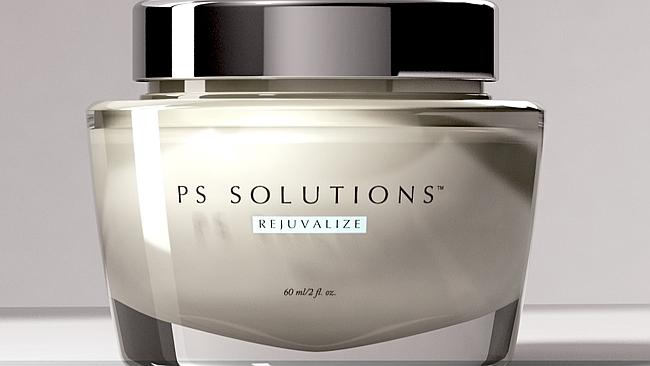Fake wonder cream experiment shows why you can’t trust a clinical trial
WOMEN using Rejuvalize report looking younger and healthier and a reduction in the look of wrinkles and lines. But its ‘miracle ingredients’ aren’t all they seem.

BEHOLD, the new wonder face cream everyone’s talking about.
This is Rejuvalize, the miracle product that’s so effective 100 per cent of users in clinical trials said it made their skin feel more youthful.
A further 98 per cent noticed a reduction in the appearance of lines and wrinkles, and 80 per cent reported that it made them look younger and healthier.

The only catch is that this is a made-up product, created by mixing $2.99 home-brand sorbolene moisturiser with a squirt of Aloe Vera After-Sun Care to make it smell nice.
The fake face cream was dreamed up by Kirsten Drysdale and the team from ABC’s The Checkout, which returns to our screens tonight at 8pm. They wanted to find out just how easy it was to make the impressive “clinically proven” claims we see in so many cosmetics ads.
“We dug around a bit and found there was a whole industry out there to serve the beauty industry and support marketing claims,” Kirsten told news.com.au. “We said we wanted scientific backing for claims our product was smoothing, firming and anti-ageing.”

Around 20 labs responded, offering the team different options for proving all the wild claims about their cheap moisturiser. The team opted for the user trial — a subjective assessment by volunteers — and within a few weeks, they had a report confirming everything they wanted to hear.
“There are a few things to look out for,” said Kirsten. “A self-perception test is almost guaranteed to be bogus.”
Clever wording that dodges outright lies is now standard practice in the beauty industry. “You can’t say it reduces wrinkles, only that it reduces the appearance or look of them. Our product ‘reduces the appearance of fine lines’ and ‘improves the look of firm skin’.”

The team asked a number of cosmetics companies for information about their testing methods, but the industry remains shrouded in mystery. Some wouldn’t confirm which labs they used, while others could point to the labs, but couldn’t say how the trials were run.
While some of the labs are scientific, testing products like sunscreen for their SPF levels, Kirsten said that unless we know how trials are run, we can’t draw any conclusions from their results.
Most of the products that can really make a difference to your skin are only available from a dermatologist with a prescription, since they can have side-effects.
“People are wasting money, sometimes $80 or $100-plus, and getting nothing back,” added Kirsten. “These are areas where we should be able to trust the claims made. This industry is undermining the credibility of every product.”
The Checkout returns to ABC tonight at 8pm.



